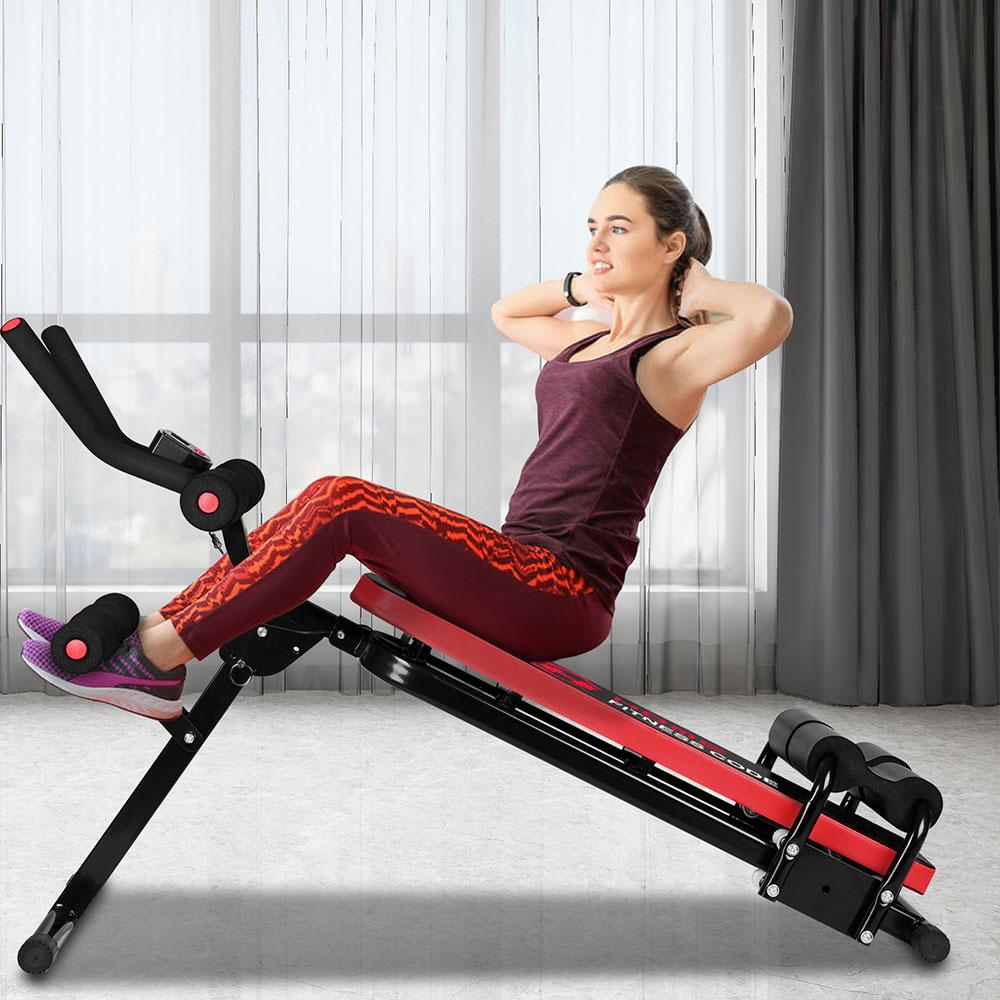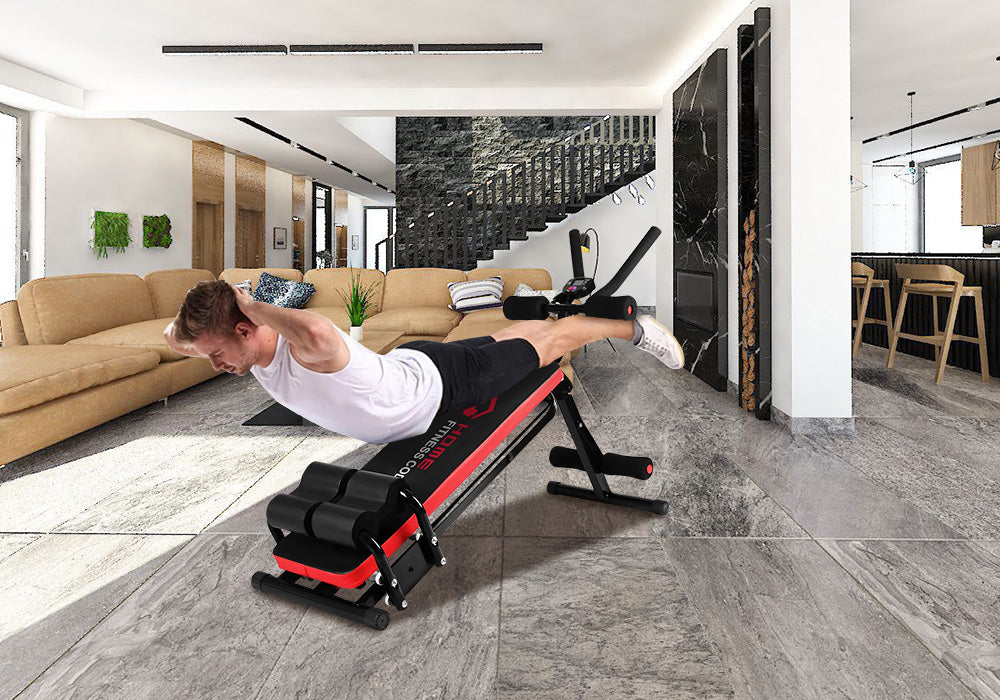1. Tighten
Sit-ups are mainly aimed at exercising the rectus abdominis, which is a long, flat muscle in the front of the stomach. Exercising the rectus abdominis helps to bend the spine.
How to do it: Lie on your back on a bench, fix your feet and knees, and put your hands behind your head. As you do it, slowly lift your spine one floor from the bench. Please be careful not to strain your neck during exercise. When you reach the vertical sitting position, repeat the previous movement again and lower to the bench. Repeat this for 20 sets once.
Sit-ups are mainly aimed at exercising the rectus abdominis, which is a long, flat muscle in the front of the stomach. Exercising the rectus abdominis helps to bend the spine.
How to do it: Lie on your back on a bench, fix your feet and knees, and put your hands behind your head. As you do it, slowly lift your spine one floor from the bench. Please be careful not to strain your neck during exercise. When you reach the vertical sitting position, repeat the previous movement again and lower to the bench. Repeat this for 20 sets once.

2. Trunk Extension
Exercise can strengthen the erector spinae muscles, help support and maintain stability.
How to do it: Lie on the sit-up bench with your knees bent at the end of the bench to secure them. Then put your hands behind your head and lift your upper body from the bench until it is parallel to the floor. Hold this position for 2-3 seconds, then slowly lower it. Repeat this for 20 sets once.

3. Oblique chest press
This exercise can activate your pectoralis major. This muscle is the largest muscle in the chest and provides stability to the front of the shoulder joint.
How to do it: Lie on your back with your knees fixed on a sit-up bench. Hold a dumbbell in each hand, extend your arms to shoulder height, and bend your elbows at a 90-degree angle. Then, stretch your elbows, push the weight directly up into the air, and then slowly put it back into place. Repeat this for 20 sets once.

4. Russian twist
The Russian twist strengthens the oblique abdominal muscles on both sides of your stomach. Exercising the oblique abdominal muscles helps to bend the upper body, bend sideways, and rotate the torso.
How to do it: Fix your knees to the end of the bench and lie on your back. Put your hands behind your head and do sit-ups while rotating your right arm to your left knee. Hold for 1-2 seconds, straighten your body and put it back on the bench. Then repeat the movement of the left arm to the right knee. Repeat this for 20 sets once.

5. Raise your leg
Leg lift exercises can strengthen your transverse abdominis muscle, which is located deep in your core and can provide stability to the spine.
How to do it: Put your head on the top of the sit-up bench, place your wrists on the end pads, and raise your legs at the same time so that your legs are at a 90-degree angle to your upper body. Hold the leg here for 1 to 2 seconds, then slowly lower it back to the bench. Repeat this for 20 sets once.

6. Push-ups
Push-ups and sit-ups are the two most common exercises for sit-up bench. It can strengthen the chest muscles, including pectoralis major and pectoralis minor.
How to do it: Keep your elbows straight and place your hands on the upper part of the sit-up bench. Put your body weight on your arms, then slowly bend your elbows and lower your chest, knowing it gently rubs the bench. After holding for 1 to 2 seconds, stretch your elbows and push back to the original position. Repeat this for 20 sets once.

However, sit-up bench are not suitable for everyone, especially those who suffer from waist, spine and neck problems. In order to prevent injury and achieve a step-by-step training process, it is recommended that beginners start with some simple exercises, such as placing your hands on your chest instead of behind your head.


